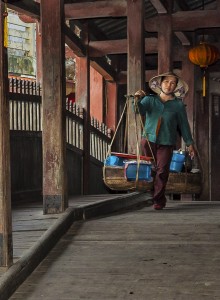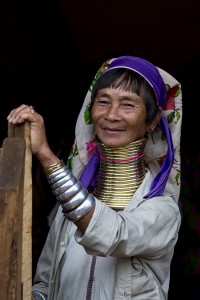Travel Photographer Reveals Secrets
By Sophie-Claire Hoeller, businessinsider.com
I Found this fascinating interview done by a writer for businessinsider.com with >Whitney Tressel, Travel Photographer Reveals Secrets, regarding her secrets to getting those great travel shots – enjoy!
Click on this link to read entire story with photo examples:
http://www.businessinsider.com/a-travel-photographers-tips-on-getting-the-best-travel-pics-2015-6
“Whitney Tressel is a hybrid travel photographer and photo editor who has dozens of cross country road trips and travels under her belt, documented for the likes of Esquire, Budget Travel, and Hemispheres. Professing that she’s always had the travel bug, she’s rarely not on the road, as summers see her teaching National Geographic’s Student Expedition courses, which have taken her and her pupils to far flung locales like Paris, Barcelona, Costa Rica, and next month, Australia.
We asked the travel photography instructor/editor/photographer to share her tips on upping our travel photography game.
BUSINESS INSIDER: What’s the most important aspect of travel photography, as opposed to regular photography?
WHITNEY TRESSEL: It’s about visually showing a sense of place. That can be literally taken as landscapes or architecture, but it can also mean the people there, or the different cultural traditions, or the different ways of life. Or sometimes it’s the similarities. Sometimes you think you’re going to a place that is so different, and you realize how similar it actually is.
BI: How do you feel about selfies and hot dog legs?
WT: I mean I do ’em, but I don’t like it if your whole feed is filled with them. As a travel photographer, you are the vehicle for the experience. You’re the storyteller of the scene — the documentarian, the deliverer! And most of the time you’re telling something else’s story, even on vacation. Whether it be through a portrait of a person, a view of a place, a detail of a subject, it’s not just about you — cue the selfie — but it’s about your travels. Try making it less about you, and more about what you’re surrounded by, and see what happens.
BI: What’s the protocol for taking pictures of locals? Do you have to ask them for permission? Isn’t it super awkward?
WT: It’s super, super awkward for introverts and extroverts alike. It depends on what you want out of it. If you want the natural environment, just shoot from the hip. Some people are firm believers in not not asking for permission, which, ethically, will always be an argument, but I take portraits of strangers and I ask them for permission. My style is that I want them to be engaged. I’m always one to ask for permission, that’s my opinion, but then some people say to ask permission is to seek denial, and you will get some noes. Some photographers shoot without permission because that’s what they want, but other photographers shoot without permission because they’re afraid to ask.
BI: How do you get the inside scoop on where to go and what to see off the beaten path? Not the touristy stuff.
WT: Asking a local, 100%. And you almost have to ask them three times. If someone came up to me in New York City, I might send them to the Empire State. But if you push me a little further, I’ll say go up to the Rockefeller Observatory so you can get a shot with the Empire State. But if you ask me a third time I might give you a speakeasy in the West Village. And that’s what you want. You have to not only ask a local, but show them that you’re serious about the off the beaten path thing, because people don’t easily give up their secrets. The more you give the more you get, I guess.
BI: Is using an iPhone a no-no?
WT: I’m pro iPhone. The quality of iPhones keeps getting better and better. I might get in trouble in the photography community for this one, but so many people think it’s about the body of the camera, but it’s actually about the lens. So use whatever you want, but get a good lens.
BI: So what are some photography basics us amateurs should be aware of?
WT:
1. Pay attention to the light
In travel photography, paying attention to the light translates into keeping in mind the time of day you’re seeing things. For example, yes you want to go the Taj Mahal super early to avoid crowds, but at the same time it’s not a bad idea to go super early to see the sunrise, because the light is so much better.
There are three times of day that I encourage folks to explore:
• Sunrise. I am not a morning person but it is always worth it.
• The Golden Hour. This is the time of day right before sunset sunset and right after sunrise when everything kind of has a gold cast, and the shadows are longer. I’m not a scientist, but for some reason everything looks gold — some call it the magic hour.
• The time right after sunset. You see so many sunset pics, but people take those pictures and then they go to dinner. But if you wait a half hour after that, when the sun’s already away, that’s when the most vibrant colors come out.
2. Know where the sun is
Knowing where the sun is is a huge element in travel photography. Most travel photographers don’t shoot with flash or lights, though some do, so it’s important to know when the natural stuff is going on.
3. Understand the rule of thirds
If you literally third a photo — add two lines vertically and two horizontally — where the lines cross is where you want your subjects to be. This is a way to make an objectively great photograph, but photography is so subjective, you could put something right in the center and it could be the most beautiful photo you have ever seen. So that’s just a reminder to mix it up.
4. Pay attention to the lines in a photo
Whether that means literal lines, or lines like if there’s a ton of people in the frame, who’s looking at who? Where does your eye go? How does your eye dart around?
5. Use your chosen frame to your advantage
Pay attention to the actual frame — you have the Instagram square, which came from film cameras, and your horizontals, and verticals, and your panoramas. Whatever shape you choose to shoot in, use the frame itself to activate your photograph. Mind your chosen frame and make sure you have an organization to what’s happening in that space while you’re actually shooting.
6. Have a foreground, middle ground, and background
Those three layers add literal — and psychological! — depth to a photograph. Pay attention to what’s going on on all three planes for a more engaging image.
7. Be mindful of color
Go back to your 5th grade art class and experiment with complementary colors, like if there’s blues against oranges. Also pay attention to analogous colors, like reds that fade into oranges or pinks.
8. Make it about your experience
There’s nothing wrong with the ‘I’ve-been-there, check, bucket list, check,’ kind of photo. I’ve done them. If you’re in front of the Eiffel Tower, you’re going to take a picture, and that’s fine. But after that, everybody has that picture, so from there you have to go past shooting the pretty postcard.
What makes it more engaging for other viewers, and for yourself looking back, is making it about your experience. If millions of people have been to a UNESCO world heritage site like the Grand Canyon, how are you going to record it as something you remember? Maybe instead of shooting the Grand Canyon vista, turn around and photograph the dozens of people photographing the vista. It’ll you a humorous spin.
9. Get a different angle
Think outside the box. This is difficult for anybody — it’s difficult for working travel photographers to keep pushing the envelope, but some simple ways to do that is that if you find yourself standing, knees locked, arms out, elbows at 90 degrees, stoop down, get on your belly, turn your camera up to the sky, look left, look right, look behind you, get something different. Walk away from the crowd a little bit. Sure, there’s a reason why everyone is standing in a certain spot, it’s probably a beautiful view, but I bet if you walked 100 feet left or right you could find something different.
10. Get close
Always get closer. When taking portraits, action shots, animals even. Get in there! Sure you can crop it later, but train yourself to be an “in camera” photographer and pay attention to your framing in real-time.
11. Wait
Nobody, including myself, waits long enough anymore. Nobody just sits there, and I don’t want to sound accusatory, but just wait. I dare you to spend 20 minutes in one spot. Stick it out in one place and something’s going to happen, and that’s going to change the scene. It could be something silly, like a cute little kid running across the sidewalk, but that tells us something more about the place. Spend the time and I guarantee you you’ll see something different than you would if you just walked in and out.
12. Get boring
To get another take on your vacation, other than those obligatory palm tree pics, photograph places that would feel mundane in your own home town. Go grocery shopping in Japan, get a haircut in Italy, do your laundry at a laundromat in West Texas. And photograph it!
13. Take a lot of pictures
Choose one thing to photograph, say an air stream in Marfa, Texas, and see how many different ways you can photograph it. Say you shot two dozen pics of this air stream, I always find that it’s going to be the first couple or the last couple of shots that are your best. The point is you have a natural instinct and natural eye, but at the same time if you keep pushing past what you feel is a good photograph, you’re going to get an even better one.
14. Tell a story and use all five senses
I know that when you’re on vacation you’re not necessarily trying to tell a story, but so much in photography is about the actual story of what’s happening.
I like to, in my mind, go through all five senses. Take shots that feels like you can smell what’s going on. Can you somehow photograph the ocean so that you can smell the salt? Maybe that means getting really close to the waves, maybe even letting some saltwater hit your lens. How would I take this photograph and have people smell it? Add that element, that second layer of conceptual senses.
15. Keep your camera steady
Especially for night shots, find a place where your camera can be completely steady, a tripod, or even leaning a cell phone against a glass. You think you’re not shaking, but you are. This is more advanced, but if you have the capability, lengthen the shutter speed and widen the aperture when it’s dark.”
Click on this link to read more with photo examples:
http://www.businessinsider.com/a-travel-photographers-tips-on-getting-the-best-travel-pics-2015-6
A Different Perspective always keeps travel photographer’s needs in mind when creating its photo tours.
CALL NOW 415-331-3791 or Email us at teri@dp.local
Regards, Teri



